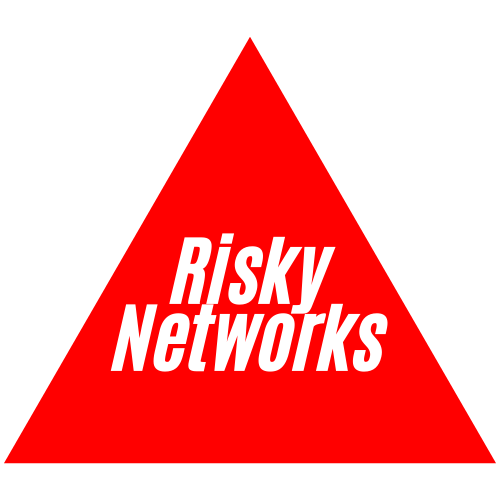ICTs and many other digital technologies have to the potential to transform our society and bring about massive social change through connectivity, access to information, faster communication and automation. So, we are inundated by success stories of digital development, but we need to also understand its failures. This is the fourth article in a critical series on when well-intended ICTs and online platforms miss the mark in transforming society. This article discusses how the digital divide effects access to remote learning and learning outcomes during the COVID-19 pandemic.
The Organisation for Economic Co-operation and Development defines the digital divide as the “ the gap between individuals, households, businesses and geographic areas at different socio-economic levels with regard to both their opportunities to access information and communication technologies (ICTs) and to their use of the Internet for a wide variety of activities.”[1] In other words, it refers to uneven or unequal access to the internet or ICTs within the lens of social and/or economic difference. The digital divide in education continues to emerge as a relevant global issue, especially within the context of the COVID-19 pandemic.
During the first wave of the pandemic, schools around the world started transitioning from in-person to remote learning—as a method of containing spread of the virus. A 110-country study conducted (June-July 2020) in partnership with the United Nations Children’s Fund (UNICEF), the United Nations Educational, Scientific and Cultural Organization (UNESCO) and the World Bank, which included survey and reviews of national education plans, found that 463 million children could not access remote learning services[2]. These remote learning services would be usually disseminated via the internet or through broadcast radio or television. A few barriers to students, especially girls in rural areas, not being able to access to these devices include: not owning mobile phones or digital devices (i.e., tablets); the expenses of data and/or electricity; and limited local digital infrastructure (i.e., slow internet speeds, out of range data services, etc.)
The study also indicated that countries with more high-income groups were most likely to incorporate internet-based remote learning[3]. Rather, radio broadcasts were the most popular method of remote learning in lower-income countries. Equally important, less than 50% of students with a low-income background were able to access internet-based learning. Whereas, internet-based learning was accessible to over 70% of students with a middle to upper-level income background. Therefore, this short study shows that the income background of students could be a determining factor in the type of remote learning made available. However, selecting a preferred remote learning method is not a democratized process for students. Many students from low-income backgrounds have no choice but to adapt to costly internet or mobile-phone based remote learning options.
For example, a brief investigative report from CBS News, discussed how the pandemic is intensifying the digital divide and education in Africa.[4] The report focused on the story of a South African secondary school student, Dimakatso Masipa. Dimakatso lives in a poor township, where she rarely substitutes her food expenses for mobile data—which she uses to receive and submit assignments. The township also has no electricity, so if her mobile phone loses power, she still cannot receive the assignments.
Review a short video based Dimakatso’s story and the CBS report below.
However, the report also highlights the Government of Bukina Faso for more strategic planning in leveraging learning services via broadcast radio, which is low-cost and accessible for more students. On the contrary, in countries such as Kenya, which offer low-cost broadband internet services, more students could participate in online learning.
Levels of the Digital Divide
Yet, the digital divide is deeper than internet access or mobile device access. Likewise, Alexander JAM van Deursen and Jan AGM van Dijk, researchers in media and technology studies, would argue that the digital divide represents three deep levels: the first-level digital divide; second level digital-divide and third-level digital divide[5]. The first-level digital divide would encompass the cases described above, or instances of an individual or groups having or not having material access to the internet. Alternatively, the second-level digital divide incorporates internet skills and actual type(s) of internet usage; the third-level digital divide recognizes the outcomes of this internet use.[6] Considering the first-level, more people globally do have access to internet services. On the other hand, the second and third level symbolize a need to account for how the internet is being used, and whether it is beneficial to students, teachers and/or parents. Once could argue that an emphasis on the second and third-level divide would ask the following questions: How many students actually know how to use the internet to open their learning modules? What methods of digital learning actually work? How many hours do students spend in remote learning versus using social media on a school day? How many teachers and/or parents have internet skills? How many students retained learning from digital modules? These are all important questions, but unfortunately this study and current narratives negate a focus on the above contextualities of the digital divide.
Looking Beyond Internet Access
Though, an organization shifting this narrative during this pandemic is Educate!, a youth skills organization based in Uganda, Rwanda and Kenya[7]. Knowing the internet was not readily available in some communities, Educate!, already issues skill-based learning through radio, SMS, and interactive voice response. However, given the changes in social dynamics of student life at home during the pandemic, Educate! decided to incorporate user research elements in determining how best to disseminate learnings, by gathering student opinions. For example, they found students spent their mornings helping out with household chores or working on the farm. Therefore, for this group, SMS modules were sent later in the day, and radio lessons were scheduled on the weekends[8]. Educate! also established that if learning modules were sent to a parent’s phone instead of a child’s phone, a child would engage more in the learnings. Moreover, this case shows how focusing on attributes of the digital divide other than just access, could support organizations in reaching more children.
Finally, another growing aspect of the digital divide in education is security. According to UNICEF, as students spend more time socializing online due quarantining, they could be more susceptible to cyberbullying, online sexual exploitation (i.e., grooming) or cyber sexual violence.[9] This could inform a discussion on a fourth-divide, which asks the following: Do children have digital rights and/or digital agency when accessing remote learning services? Do remote learning platforms include safeguards to protect children from harmful material, hackers or from engaging with predators?
Overall, the exigencies of the pandemic shows that the digital divide and remote learning is quite complex and messy. National and sub-national education authorities and educators have to think further beyond the walls of school buildings and quick solutions contained within the four corners of digitally-enabled devices. There is a need to test not only the accessibility, but also the inclusivity of remote learning solutions so that no child is left behind. The cases above show that internet-based solutions could also be exchanged or supplemented with broadcast radio learning or SMS learning modules.
How could digital remote learning solutions be less risky? If you are a student or an educator, what limitations have you experienced with digital remote learning? Do you think students should have agency in selecting a preferred remote learning platform option (i.e., internet-based or radio, TV, etc.)?
Notes:
- OECD.(2002).Glossary of Statistical Terms: Digital Divide. Retrieved from: https://stats.oecd.org/glossary/detail.asp?ID=4719
- UNICEF. (2020). Factsheet: COVID-19: Are children able to continue learning during school closures? Retrieved from: https://data.unicef.org/resources/remote-learning-reachability-factsheet/
- Ibid
- Debora Patta. (May 5, 2020). Coronavirus pandemic underscores Africa’s digital divide as schools move online. Retrieved from: https://www.cbsnews.com/news/coronavirus-pandemic-underscores-africas-digital-divide-as-schools-move-online/
- Van Deursen, A.J. and Van Dijk, J.A..(2019). The first-level digital divide shifts from inequalities in physical access to inequalities in material access. new media & society, 21(2), pp.354-375.
- Ibid
- Angelica, A and Nabbuye, H. (August 7, 2020). Taking distance learning ‘offline’: Lessons learned from navigating the digital divide during COVID-19. Retrieved from: https://www.brookings.edu/blog/education-plus-development/2020/08/07/taking-distance-learning-offline-lessons-learned-from-navigating-the-digital-divide-during-covid-19/
- Ibid
- UNICEF (April 14, 2020) Children at increased risk of harm online during global COVID-19 pandemic. Retrieved from: https://www.unicef.org/press-releases/children-increased-risk-harm-online-during-global-covid-19-pandemic


